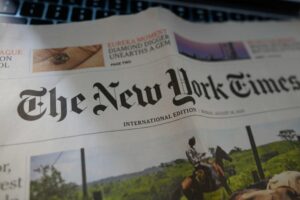
Gay, straight and bisexual may not begin to capture the changing nature of human sexuality.
A new study, published in the peer-reviewed Journal of Sex Research, analyzed surveys from around 12,000 students, and found that substantial changes in attractions, partners, and sexual identity are common from late adolescence to the early 20s, and from there into people’s late 20s.
The research said evolving and changing feelings about attraction indicate that sexual orientation development continues long past adolescence into adulthood. The results also show distinct differences between men and women, with female sexuality being more fluid over time.
‘The early 20s are a time of increased independence and often include greater access to more liberal environments.’
Sexuality is key to most people’s identity. “Sexual orientation involves many aspects of life, such as who we feel attracted to, who we have sex with, and how we self-identify,” said Christine Kaestle, a professor of developmental health at Virginia Tech and author of the study. Lesbian, bisexual and gay are the main markers for a person’s sexual preferences, but Kaestle says they may be limiting.
“Researchers have tended to focus on just one of these aspects, or dimensions, to measure and categorize people. However, that may oversimplify the situation,” she said. “For example, someone may self-identify as heterosexual while also reporting relationships with same-sex partners.”
In order to take all of these dimensions of sexuality above and beyond gay, straight and bisexual, Kaestle used data from the National Longitudinal Study of Adolescent to Adult Health, which tracked American students from the ages of 16 to 18 into their late 20s and early 30s.
Don’t miss: 12 ways to make your workplace more inclusive of transgender people
“The early 20s are a time of increased independence and often include greater access to more liberal environments that can make the exploration, questioning, or acknowledging of same-sex attractions more acceptable and comfortable at that age,” she said.
“At the same time, as more people pair up in longer term committed relationships as young adulthood progresses, this could lead to fewer identities and attractions being expressed that do not match the sex of the long-term partner, leading to a kind of [bisexual] invisibility,” Kaestle added.
Men were more likely than women to report their sexuality as straight. Women were more likely to be bisexual.
Straight people made up the largest group and showed the least change in sexual preferences over time. Men were more likely than women to report their sexuality as straight: Almost 9 out of 10 men, compared to less than three-quarters of women, Kaestle said.
Men and women in the middle of the sexuality spectrum, as well as those in the “emerging” gay and lesbian groups showed the most changes over time. Women were more likely (1 in 6) to be located in the middle of the sexuality spectrum and to be bisexual, the study concluded.
Social and cultural mores also play a role in how people define themselves, Kaestle said. “We will always struggle with imposing categories onto sexual orientation. Because sexual orientation involves a set of various life experiences over time, categories will always feel artificial and static.”
Get a daily roundup of the top reads in personal finance delivered to your inbox. Subscribe to MarketWatch’s free Personal Finance Daily newsletter. Sign up here.






